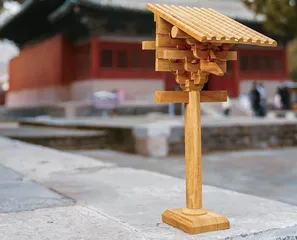榫卯的奥妙
In ancient Chinese architecture, the mortise-and-tenon structure reached a very high level of artistry and craftsmanship. This structure involves carving a protruding part, called a "tenon," on one end of a piece of wood, and carving a matching recess, called a "mortise," on another piece of wood. When the tenon and mortise fit together, they can be tightly joined without the need for nails or glue. This method not only made buildings stronger and more stable but also demonstrated the wisdom and creativity of ancient Chinese craftsmen.
在中国古代建筑中,榫卯结构发展到了极高的艺术和技艺水平。这种结构通过在木头的一端雕刻出凸出的部分,称为“榫”,在另一块木头上雕刻出与之匹配的凹槽,称为“卯”。当榫和卯结合时,它们无需钉子或胶水就能紧密连接。这种方法不仅使建筑更加坚固和稳定,还展现了中国古代工匠的智慧和创造力。

上一篇:
新西兰的“宝石海滩”
下一篇: